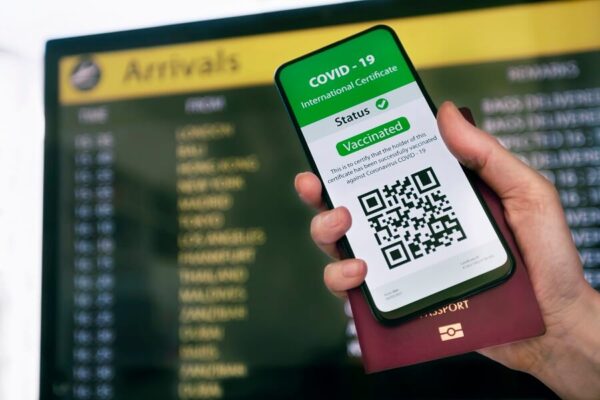In a fast-paced, increasingly digitized world, the way we travel has been revolutionized by digital travel authorization systems. Offering a seamless, efficient way to gain access to various countries without the hassle of traditional visa processes, these systems have become a cornerstone of contemporary travel.
This article aims to provide an in-depth analysis of digital travel authorization systems for readers interested in travel, technology, and global security dynamics. The focus will be on globally recognized systems such as the Electronic System for Travel Authorization (ESTA) in the USA, the Electronic Travel Authority (ETA) in Australia, and the Electronic Travel Information and Authorization System (ETIAS) in Europe. Digital Travel Authorization Systems have revolutionized the way people apply for visas, streamlining the process and enhancing security measures for international travel.
Understanding Digital Travel Authorization Systems


Australia’s Electronic Travel Authority (ETA) and numerous other countries have since followed suit. The core aim of these systems is to enhance secure, efficient travel, providing authorities with real-time information, speeding up border control procedures, and enriching the traveler experience. The establishment and maintenance of these systems engage a plethora of entities, including national governments, IT development corporations, and international bodies such as the International Civil Aviation Organization (ICAO) and the World Travel and Tourism Council (WTTC). Of course, with these systems’ dependence on vast amounts of data, reliable, secure data management is paramount, requiring that traveler information be kept confidential and the systems robust enough to accommodate high data volumes.
As technology advances, these digital travel authorization systems are likely to undergo further sophistication, potentially incorporating elements like biometrics, artificial intelligence, and blockchain technology to enhance security and efficiency even further. At present, the structure of each country’s system is unique with little standardization, although efforts are being made towards a universal system, such as the ICAO’s initiative for a globally interoperable digital travel credential system, signifying that a standardized global system could be the future of international travel.
Digital Travel Authorization Systems Worldwide
In an age where the intersection of technology and convenience is increasingly prevalent, digital travel authorization systems are playing a pivotal role in redefining international travel. Several countries have adopted such systems, with the Electronic System for Travel Authorization (ESTA) of the United States being a prominent example. In this section, we will delve into an overview of the ESTA system, shedding light on its establishment, implementation, coverage, key requirements, and the data reflecting its effectiveness.
ESTA
The ESTA system, implemented in 2009 by the United States, is an automated online system under the Visa Waiver Program (VWP). This program permits citizens of 39 countries to travel to the US for tourism or business for 90 days or less without obtaining a visa. The key requirements for application include a valid passport from a Visa Waiver Program country, a valid credit or debit card for payment, and an email address for receiving the application status.
Travelers must apply for authorization through the official ESTA website, completing a detailed online form. The decision is usually immediate, but it can take up to 72 hours. The U.S. Department of Homeland Security reported that in 2019, around 23 million ESTA applications were approved, with a refusal rate of only 0.08%, demonstrating the system’s efficiency and effectiveness. As an essential element of the US’s immigration and security apparatus, ESTA continues to evolve, reflecting the dynamic nature of international travel and security needs.
ETA Canada


The primary requirements for the eTA application include a valid passport from a visa-exempt country, a valid email address, and a debit or credit card to pay the small application fee. Applicants must fill out an online form on the official Canadian government’s website. The eTA approval is typically granted within minutes of application, but it may take several days if documents need to be submitted for review. According to official Canadian government data, more than 5.9 million eTA applications were approved from the program’s implementation to the end of 2021, with a high approval rate of 99.6%. These figures demonstrate the effectiveness of Canada’s eTA system in facilitating convenient, secure travel for numerous international visitors.
ETA Australia
Australia’s Electronic Travel Authority (ETA) system, established in 1996, was one of the first digital travel authorization systems to be introduced globally. The system is part of Australia’s Advanced Passenger Processing (APP) program and extends to citizens from over 40 countries and regions. These include numerous European nations, the United States, Malaysia, Singapore, and several others, allowing them to visit Australia for tourism or business purposes.
The key requirements for ETA application include holding a passport from an eligible country, possessing a credit or debit card for payment of the service fee, and having an email address for communication. Applicants must submit an online form on the official ETA website, with most ETAs processed instantaneously, although some may require additional information. According to the Australian Department of Home Affairs, in the year ending June 2021, there were over 5 million ETA holders who visited Australia. This high volume of successful ETA users underlines the effectiveness of Australia’s ETA system in bolstering travel convenience while maintaining national security.
ETIAS
The European Travel Information and Authorization System (ETIAS) is a digital travel authorization system set to be implemented by the European Union at the end of 2025. It’s part of the larger framework of enhancing security within the Schengen Area and will cover visitors from over 60 visa-exempt countries outside the European Union. The main requirements for an ETIAS application include having a valid passport from an ETIAS-eligible country, a credit or debit card for payment of the application fee, and a current email address to receive the authorization.
The application is completed online, with the majority of authorizations expected to be approved within minutes. As the system has yet to be implemented, official data and statistics are not available to demonstrate its effectiveness. However, the European Union anticipates that ETIAS will substantially improve the management of its external borders, contribute to a higher level of internal security, and ensure a sustainable system for authorizing and tracking visitors from countries who do not need a visa to enter the Schengen zone.
ETA UK


For the most accurate and up-to-date information, I recommend checking the UK government’s official website or contacting the nearest UK embassy or consulate. Please note that the UK’s entry requirements may have changed after my last training data in September 2021.
Conclusion
Digital travel authorization systems like ESTA, eTA, ETA, and ETIAS have revolutionized the landscape of international travel by offering efficient, secure entry procedures. Australian citizens, among others, benefit significantly from these systems, gaining easy access to multiple countries worldwide. For other nationalities, these systems provide a streamlined pathway to visiting countries like the United States, Canada, Australia, and the European Union member states. Looking ahead, the future of digital travel authorization systems will likely be marked by further technological advancements and possibly a move towards global standardization. As international cooperation and digital integration continue to expand, these systems will play an increasingly important role in shaping the world’s travel and security dynamics.
FAQ
What is a travel authorization?
A travel authorization is a formal approval, typically issued by the government of the country you intend to visit, which permits you to enter and stay in that country for a specific period and purpose. This authorization can come in various forms, including traditional visas or electronic travel authorizations.
Who needs an electronic travel authorization?
An electronic travel authorization (ETA) is generally required by travelers who are citizens of countries that have visa exemption agreements with the country they plan to visit. The exact requirements vary by country. For example, the U.S. requires an Electronic System for Travel Authorization (ESTA) from citizens of Visa Waiver Program countries, while Canada requires an Electronic Travel Authorization (eTA) from visa-exempt foreign nationals.
What is an electronic travel authorization?
An electronic travel authorization is a digital system that allows citizens from specific countries to apply online for an authorization to travel to a particular country. ETAs are usually linked electronically to the applicant’s passport and are checked by the travel carrier before boarding and by immigration upon arrival.
What is a travel authorization form?
A travel authorization form is a document that travelers fill out to apply for a travel authorization, whether it’s a visa, an ETA, or another form of permission to enter a country. This form typically asks for details such as the traveler’s personal information, passport details, and travel plans.
How to apply for an electronic travel authorization?
The application process for an electronic travel authorization typically involves the following steps:
- Visit the official website of the country’s travel authorization system.
- Fill out the online application form with required details such as personal information, passport details, and travel plans.
- Pay the application fee using a credit or debit card.
- Submit the application and wait for the approval, which is usually sent via email.
- Please note that the exact application process may vary depending on the specific electronic travel authorization system. Always refer to the official website for the most accurate information.
